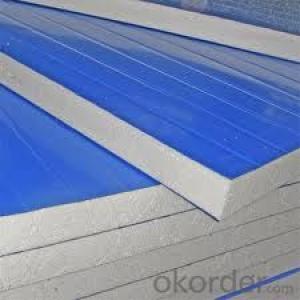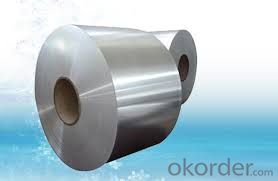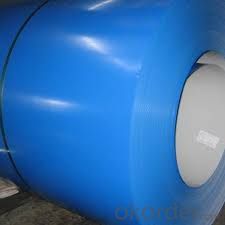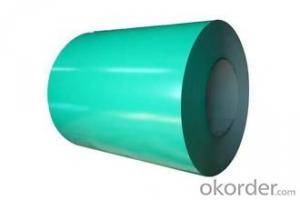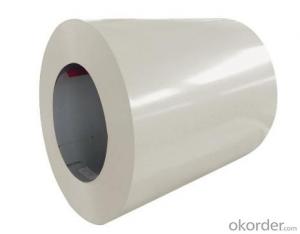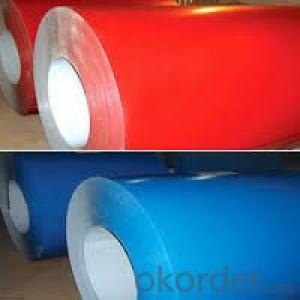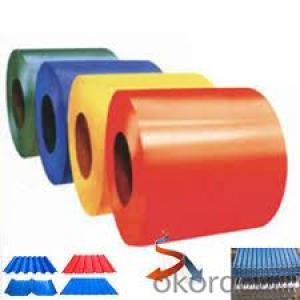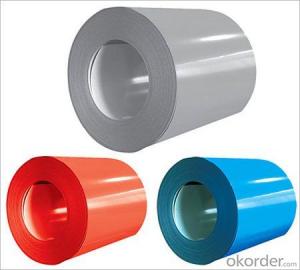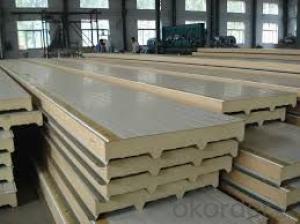Prepainted Cold Rolled Galvanized Steel Sheet Coil/PPGI Prepainted Galvanized Steel Coil
- Loading Port:
- Shanghai
- Payment Terms:
- TT OR LC
- Min Order Qty:
- 20 m.t.
- Supply Capability:
- 9000 m.t./month
OKorder Service Pledge
OKorder Financial Service
You Might Also Like
Product Description
Specifications;
1. Aluzinc coating mass: 30g-275g/sqm
2. Coil weight: 4-6 tons per coil
3. Edge treatment: Mill edge or cut edge.
4. Technical treatment: Bright annealed, flatting, cold harden.
5. Surface treatment: Annealed, bright finish, dull/bright finish, slit edge.
6. Spangle: Normal/small/big/zero spangle.
7. Delivery terms: FOB / C&R / CIF
8. Supply Ability: 30000MT/month
9. Application: The construction industry: The roof structure, keel, grill, Clapboard, ceilings, fire shutter doors, etc; The light industry, the Automobile, agriculture, animal husbandry, fishery, casing of household Electronic application, civilian smoke stack, etc.
10. Delivery time: Within 30 days after the receipt of L/C or Signed the contract or according to customer's requirement.
Special design available according to requirement; Anti-corrosion And high-temperature resistant with black painting; All the production process Are made under the ISO9001: 2000 strictly
Second Glance of Photo
Galvanzied steel coil( GI, CRC)
Color coated steel coil(PPGI)
Package: Sea worthy Export Packing Standard export and seaworthy packing. (waterproof paper and metal sheet protection with fluted rings at inner and outer edges, 4 eye bands and 4 circumferential bands fasten the coil)
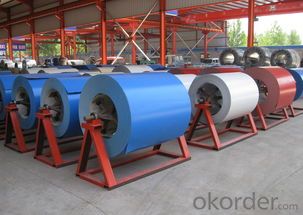
FAQ
1. Do you have QC team?
Yeah, sure, our QC team is very important, they will keep the quality control for our products.for quality inspection every day.
- Q: I know this is an alloy, but can it be mixed to form a superior steel? Therefore less likely to stain?
- In general, the austenitic stainless steels are considered to have the best overall corrosion resistance of all the stainless steels and to be the most resistant to industrial atmospheres and acid media. As the corrosion conditions become more severe (e.g. higher temperatures and stronger acids), more alloy content above that in type 304 is required. The addition of over 2% Mo to austenitic stainless steels increases resistance to pitting. Type 316 is a popular alloy in this class and contains 2.5% Mo.
- Q: What is the cost of steel coils?
- The cost of steel coils can vary depending on factors such as the type of steel, the thickness and size of the coils, and market conditions. It is best to contact suppliers or check current market prices for accurate cost information.
- Q: Already on my team is Empoleon lvl 82Heatran lvl 74Scizor lvl 34Magnezone lvl 38What other steel types should I choose?
- Skarmory, Steelix, Metagross, or Bastiodon. Personally I would switch Heatran, as I don't feel right using Legendaries.
- Q: Will a 1 inch thick A36 steel target withstand a 7.62x54r round?
- it depends on the type of steel. If it's soft steel it may stop the round, but leave a craterthat can causeirregular ricochets. If it's hardened steel (AR500 for example), the bullet will just 'splash' and fragment into little bits. It's better to shoot thin steel so the round goes through than shoot thick soft steel thatforms a crater. No matter what type you're shooting, put it no closer than 100 yards for a full power jacketed round. Try to hang the plateso it is angledslightly towards the ground so anymajor ricochets are directed into the ground and not up or back towards you.
- Q: What material is strongest? Human bone, steel, or concrete?
- I guess I would ask you to define strong then? For example: make a bed and line it with steel, then lie down in it and have someone poor concrete on you. Let it dry overnight and then try and get out. What will break first? Could be anyone of these. If you had a watch made out of bone or concrete and it fell off, it too would break. There you have it amigo, define strong!
- Q: How do steel coils contribute to the manufacturing of oil and gas equipment?
- Steel coils play a vital role in the production of oil and gas equipment, as they are an essential component. Typically, these coils are made from high-quality steel that is durable, strong, and resistant to corrosion. This makes them ideal for enduring the harsh environments and conditions encountered in the oil and gas industry. One of the primary uses of steel coils in oil and gas equipment manufacturing is in the creation of pressure vessels. These vessels are crucial for storing and transporting fluids and gases under high pressure. Steel coils are used to form the cylindrical shells of these vessels, providing the necessary strength and structural integrity to withstand the internal pressure. Steel coils are also utilized in the construction of oil and gas pipelines. These pipelines are responsible for transporting large quantities of oil and gas over long distances. Steel coils are used to manufacture the pipes that compose these pipelines, ensuring they have the necessary strength, durability, and resistance to corrosion. The coils are rolled and welded to create seamless or welded pipes, which are then coated or lined to prevent corrosion and increase their lifespan. Additionally, steel coils are instrumental in the production of drilling equipment used for extracting oil and gas. This equipment includes drill bits, casings, and wellheads, which are essential for drilling and completing wells. The coils are used to fabricate these components, ensuring they can withstand the demanding conditions encountered during drilling operations. Aside from their structural applications, steel coils are also used in the manufacturing of ancillary equipment like tanks, storage containers, and heat exchangers. These components play a crucial role in the processing, storage, and distribution of oil and gas. Steel coils provide the necessary strength and durability to handle the harsh conditions and corrosive substances encountered in these processes. In conclusion, steel coils are indispensable in the manufacturing of oil and gas equipment. Their strength, durability, and resistance to corrosion make them a preferred choice in the industry. By contributing to the fabrication of pressure vessels, pipelines, drilling equipment, and ancillary components, steel coils ensure the safe and efficient extraction, processing, and transportation of oil and gas.
- Q: How are steel coils used in the manufacturing of HVAC systems?
- Steel coils are used in the manufacturing of HVAC systems primarily for heat transfer purposes. They are typically used in air conditioning and refrigeration systems to facilitate the transfer of heat between the refrigerant and the surrounding air. The coils, usually made of copper or aluminum tubes with steel fins, are designed to maximize the surface area available for heat exchange, allowing for efficient cooling or heating of the air passing through the system.
- Q: Having a new kitchen and would like to know the pros and cons of stainless steel as opposed to white appliances. I can only think of finger marks on the SS, which I believe are difficult to remove. Anyone had both that they could advise please?
- I have Stainless Steel and YES it shows finger prints etc, Since there are no children around it's easier to keep clean, but one word of caution when using commercial SS cleaners, if the spray gets onto the floor it's almost impossible to get off and makes it slippery as ice. I'd use newspaper before using a SS cleaner,, I've had both and would opt for WHITE in any case. So easy to maintain, Now, they do make a Faux SS, which is very nice., and don't show any markings at all, our Son has one and with 3 kids in the house constantly using the Fridge it's been great, you might want to look into that..
- Q: so why shouldn't one use a steel cased 223 in an ar15?
- Steel cased ammo doesn't obturate (expand against the chamber walls) when fired as well as brass cased ammo does. This allows carbon to build on the chamber walls. Leading to failure to extract. But if you can get steel cased ammo for cheap, shoot it up! Just have a cleaning rod with when you shoot. If tapping the butt on the ground doesn't dislodge the spent case, push it out with the rod. Be sure to use a chamber brush when you clean your rifle after shooting steel cased ammo. I would never use steel cased ammo for defensive purposes in an AR however. The occasional failures to extract make it a bad idea. It's plinking ammo only.
- Q: So...I'm learning about how steel is made and I'm wondering if there is a more environmentally friendy method. I view it as unfriendly b/c of the oxygen that is injected when the steel is in the blast furnace or electric arc furnace. This oxygen bonds w/ the carbon to produce CO and CO2. THis is necessary to reduce the amount of carbon content to produce harder steels. So what other methods are there that can be used w/o having to end up w/ co and co2? thanks
- From what I understand of it, US steel is better as the steel is more recycled than Canadian, so a lot of that oxygen / CO2 has already taken place compared to working from ore. The second reason US steel is environmentally ahead of Canadian is that US tends to use Electric Arc, while Canadian uses Basic Oxygen, Basic Oxygen uses more energy than electric arc, and I think it also uses more oxygen, but I would suspect that oxygen that it uses is 'waste oxygen' and not converted into Co2 because the Co2 process is limited by the carbon, and steel only has so much carbon.
Send your message to us
Prepainted Cold Rolled Galvanized Steel Sheet Coil/PPGI Prepainted Galvanized Steel Coil
- Loading Port:
- Shanghai
- Payment Terms:
- TT OR LC
- Min Order Qty:
- 20 m.t.
- Supply Capability:
- 9000 m.t./month
OKorder Service Pledge
OKorder Financial Service
Similar products
Hot products
Hot Searches
Related keywords
